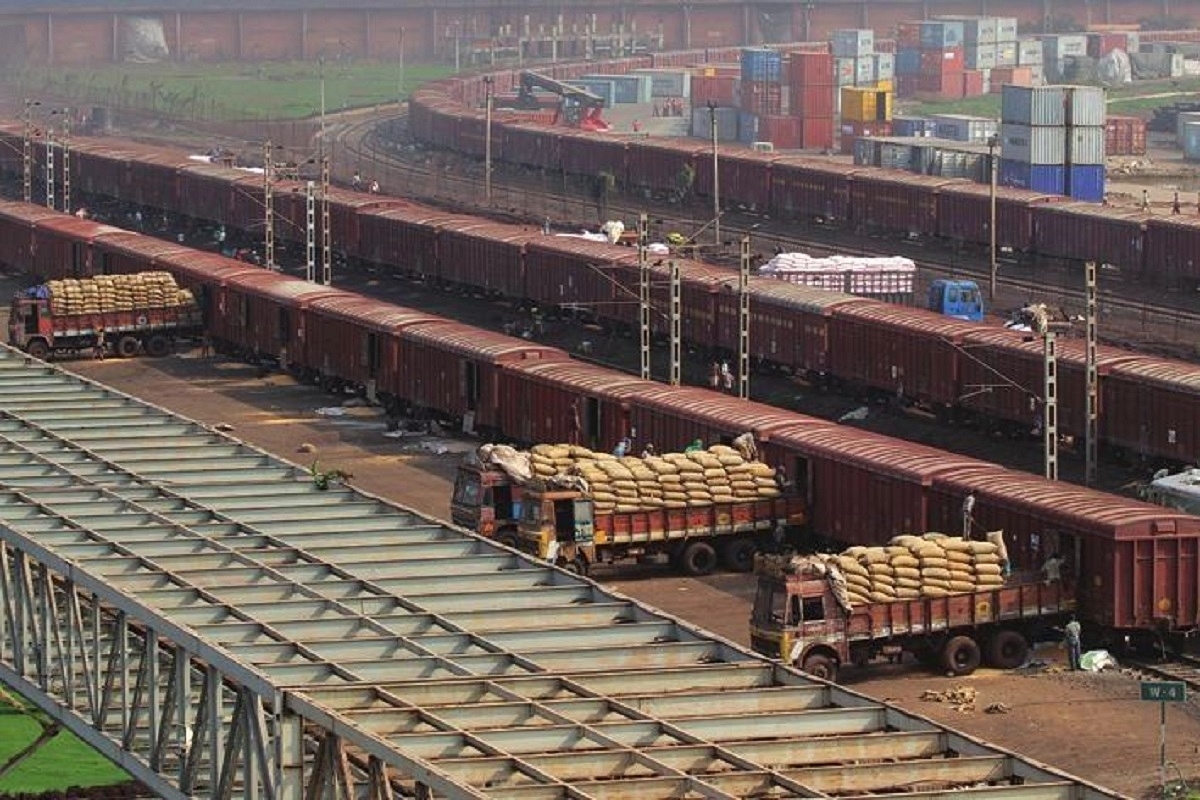News Brief
Over 500 Wheat Wagons Stranded Awaiting Clearance To Cross Bangladesh Border
- About 31,200 tonnes of wheat loaded in 346 wagons are awaiting registration certificates to cross borders.
- Retention of wagons for such a long period is affecting the wagon supply of the railways.

Wheat being loaded in wagons at a station.
Amid the heavy demand for wagons for goods transportation in the freight sector, over 500 wheat-loaded wagons are being stranded nearly a month awaiting clearance from DGFT (Director General of Foreign Trade) to cross Bangladesh border.
Though the government has put a curb on wheat export to meet the domestic demand, it has amended its wheat export ban order of 13 May to allow export consignments that were registered in the Customs Department's systems and handed over for examination on or prior to 13 May to be shipped out.
Currently, there are about 12 rakes of wheat meant for export to Bangladesh with letter of credit issued before 13 May 2022 being stranded at different locations in India.
While a total 31,200 tonnes of wheat loaded in 346 covered wagons are awaiting registration certificates (RC) to cross borders, retention of wagons for such a long period is affecting the wagon supply of the Indian Railways.
RC is mandatory for export and without RC from DGFT, goods cannot cross borders.
Besides wheat, the covered wagons are required for transporting foodgrains and fertiliser also.
The railways has deployed maximum boxn wagons for carrying coal to power houses to facilitate maximum coal supply to tide over the crisis in the power sector. In fact, many passenger trains were cancelled to ensure uninterrupted coal supply.
According to sources, DGFT is in the process of issuing RC so that wheat rakes can reach Bangladesh.
The issue is expected to be sorted out soon and the RC would be issued shortly, sources added.
Support Swarajya's 50 Ground Reports Project & Sponsor A Story
Every general election Swarajya does a 50 ground reports project.
Aimed only at serious readers and those who appreciate the nuances of political undercurrents, the project provides a sense of India's electoral landscape. As you know, these reports are produced after considerable investment of travel, time and effort on the ground.
This time too we've kicked off the project in style and have covered over 30 constituencies already. If you're someone who appreciates such work and have enjoyed our coverage please consider sponsoring a ground report for just Rs 2999 to Rs 19,999 - it goes a long way in helping us produce more quality reportage.
You can also back this project by becoming a subscriber for as little as Rs 999 - so do click on this links and choose a plan that suits you and back us.
Click below to contribute.
Latest